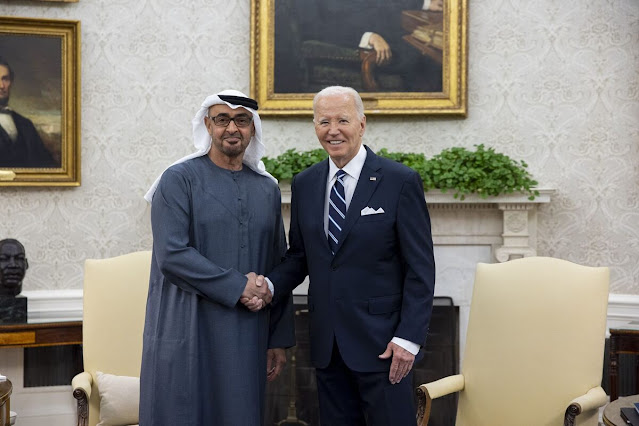Strengthening Ties: UAE and US Sign Landmark Customs Cooperation Agreement
Enhancing Economic Relations Through Strategic Collaboration
In a significant development for international trade, the United Arab Emirates (UAE) and the United States have formalized a customs cooperation agreement aimed at bolstering economic ties and facilitating smoother trade operations. Signed during President Sheikh Mohamed bin Zayed’s official visit to the US, this agreement represents a pivotal step in enhancing bilateral relations, which have been steadily growing over the past five decades.
A Deepening Economic Partnership
The agreement was signed by Ali Mohammed Al Shamsi, Chairman of the Federal Authority for Identity, Citizenship, Customs and Port Security, and Troy A. Miller, Acting Commissioner of US Customs and Border Protection. This strategic partnership focuses on several key areas: enhancing customs cooperation, exchanging expertise and information, and reducing customs violations and illicit trade. As highlighted by Al Shamsi, the agreement is expected to strengthen the economic partnership between the two nations significantly.
Bilateral trade between the UAE and the US has witnessed remarkable growth, reaching approximately $39.5 billion in 2023—a substantial increase from $23.8 billion in 2022. This surge is attributed to the depth of political and economic ties that continue to evolve. The UAE remains a crucial market for US goods in the Middle East, with imports from the US totaling $25.9 billion in 2023, reflecting a 19% increase from the previous year.
Key Objectives of the Agreement
The customs cooperation agreement aims to achieve several critical objectives:
1. Enhance Trade Exchange: By streamlining customs processes and reducing bureaucratic hurdles, both countries aim to facilitate smoother trade flows.
2. Reduce Customs Violations: The agreement includes measures to combat illicit trade activities, ensuring compliance with customs regulations.
3. Technical Cooperation: A significant aspect of this partnership involves sharing best practices and technical expertise in customs management, which will elevate national competencies through targeted training programs.
4. Strengthen Regional Trade Gateway: The UAE's strategic location as a regional hub for global trade is reinforced through this agreement, further solidifying its role as a vital transit point connecting Asia, Europe, and Africa.
Implications for Global Trade
The signing of this agreement is not merely a bilateral affair; it has broader implications for global trade dynamics. By enhancing cooperation in customs matters, both nations are better positioned to navigate the complexities of international commerce. The exchange of information and best practices will enable them to respond more effectively to challenges that may hinder the smooth flow of goods along shared supply lines.
Moreover, this partnership underscores the importance of historical ties between the UAE and the US. As noted by Al Shamsi, “The significance of signing this cooperation agreement lies in our mutual commitment to fostering a vibrant trade relationship that benefits both economies.” The US remains a strategic partner for the UAE, whose economy continues to grow rapidly.
A Step Towards Future Collaboration
In conclusion, the customs cooperation agreement between the UAE and US marks a significant milestone in their longstanding economic relationship. By focusing on enhancing trade exchange, reducing violations, and fostering technical collaboration, both nations are poised to reap substantial benefits from this partnership. As global trade continues to evolve, such agreements will be essential for ensuring that countries can adapt to new challenges while maintaining robust economic ties.
This landmark agreement not only strengthens existing relations but also sets a foundation for future collaborations that will enhance both countries' roles as leaders in global commerce. As they move forward together, the UAE and US are well-positioned to navigate an increasingly interconnected world economy.



Comments
Post a Comment